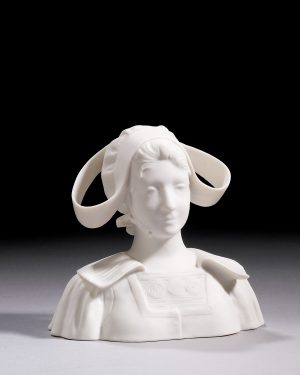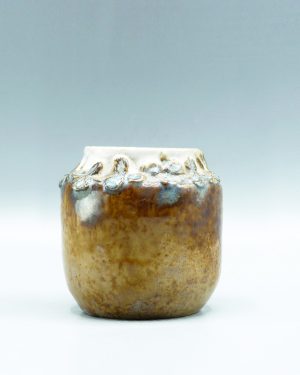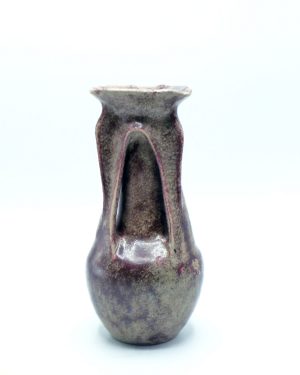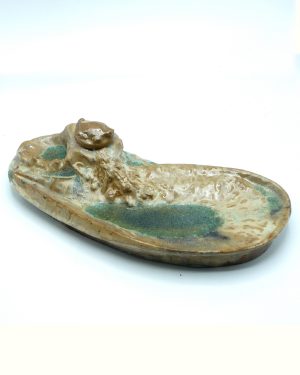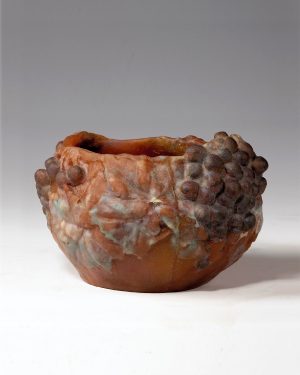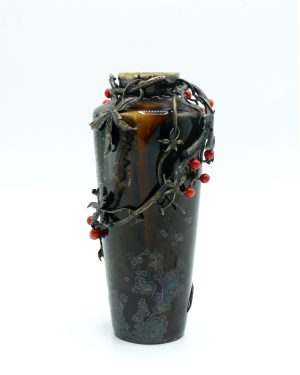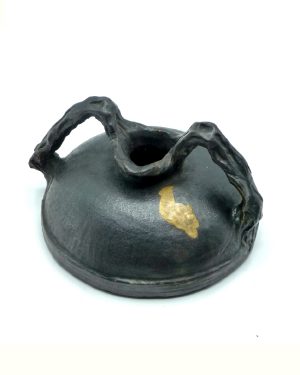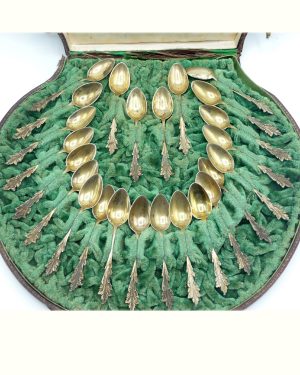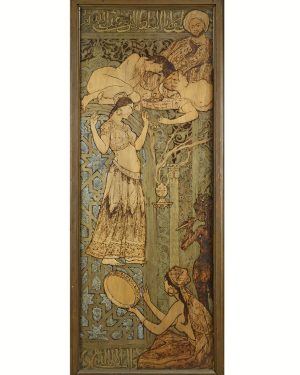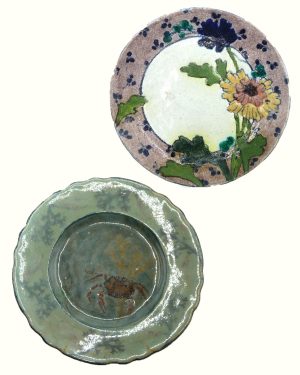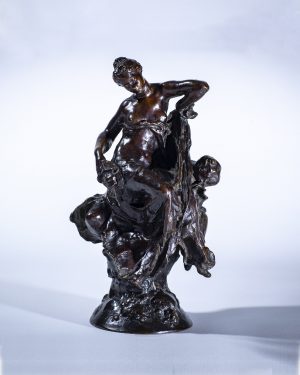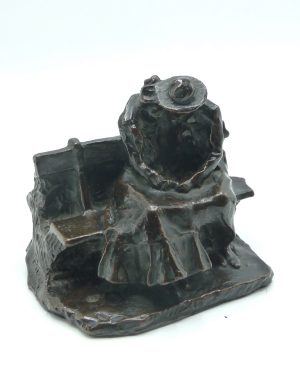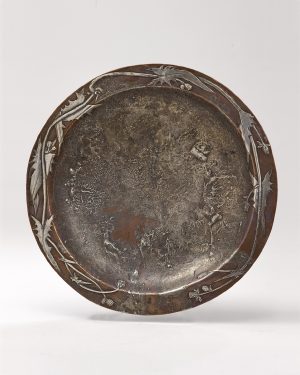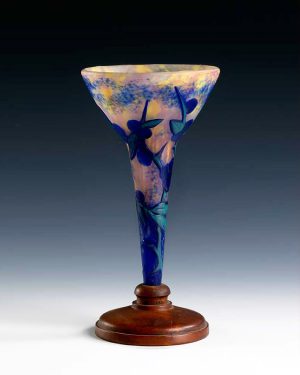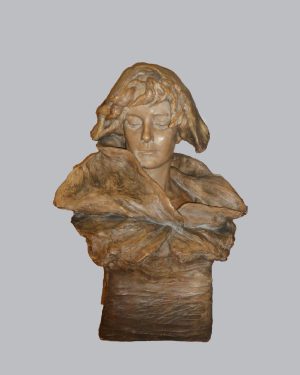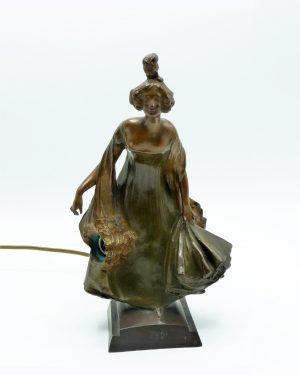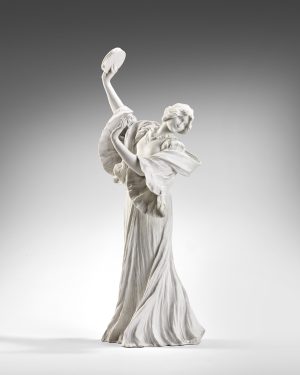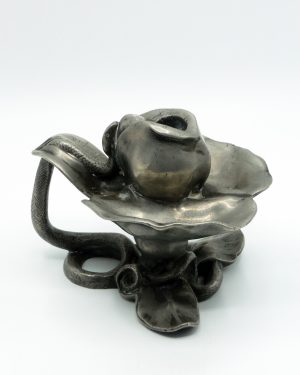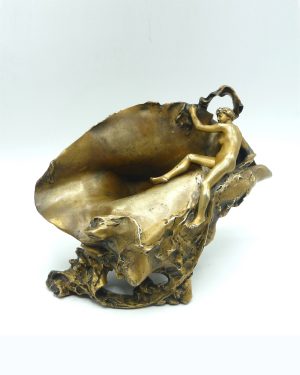LUCIEN BONVALLET – ANTOINE-ERNEST CARDEILHAC – “ANCOLIE BLEUE” VEGETABLE DISHES
“ANCOLIE BLEUE” VEGETABLE DISHES
Exceptional pair of silver covered bowls. With their trays
The cover decorated with an ivory carved seed
With French Minerva mark by CARDEILHAC PARIS and after the drawing by Lucien BONVALLET, circa 1899
Vegetable dishes: 31 cm. long (with the handles)
Diameter of the trays: 34 cm.
Exhibition
Exposition Universelle, Paris, 1900
“Le surtout de table exposé par M. Cardeilhac a retenu tous les examens (reproduit dans l’Art décoratif, août 1900). Et de l’avis unanime, c’était le groupement le mieux entendu de l’orfèvrerie exposée. La forme basse et bien d’aplomb du surtout et de la jardinière, compensée par le bouquet plus trapu des flambeaux et l’interposition des coupes à fruits laisse le mouvement libre pour toutes les pièces du service, comme il permet à chaque invité de voir l’ensemble harmonieux des cristaux, des fleurs, du linge apaisé, et de jouir en un mot du luxe du décor, sans être tenu à des souvenirs archaïques. A une époque où l’orfèvrerie alternait entre les curiosités de la petite sculpture appliquée et les reconstitutions des anciens styles, l’atelier Cardeilhac se maintenait à une réputation très sérieuse par le soin qu’il apportait à toutes les pièces de table. Sa coutellerie est connue dans l’Europe entière et les spécimens en sont aisément reconnaissables. Ce même soin, il l’a apporté à toutes les œuvres de grosserie, et les cafetières comme les légumiers, les chocolatières, les soupières, la platerie sont vraiment des œuvres de la recherche la plus moderne et la plus séante qui soit. Le mouvement floral a fourni les décors admirablement appropriés à chacune des formes, sans en compromettre ni l’assise ni la ligne. Les photographies des différents objets que nous reproduisons indiquent la supérieure entente de ces orfèvreries, dont les galbes, les contours et les très beaux plans décoratifs ont été trouvés et dessinés par M. Bonvallet, un véritable artiste dont les cartons seront à rechercher”. Léon Maillard, Orfèvreries, Orfèvres, l’Art Décoratif, février 1901, page 206
Bibliography
L’Orfèvrerie à l’Exposition, Art et Décoration, December 1900, ill. page 163



